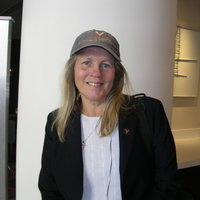Perplexity on Rebecca Culshaw Smith and Fauci's original thinking about AIDS
Rebecca Culshaw Smith and Fauci's original thinking about AIDS
If Rebecca Culshaw Smith succeeds in debunking David Ho’s foundational AIDS research, it would fundamentally challenge the modern scientific consensus that HIV is the primary and necessary cause of AIDS. This would retroactively cast early uncertainties and warnings—including Anthony Fauci’s 1983 statements suggesting that household contact could transmit AIDS—in a new light. Fauci’s initial warnings were rapidly criticized and later walked back when HIV was identified as the key driver of transmission and the modes of contagion were clarified by subsequent research led by figures like David Ho.
Fauci’s Early Warnings
In the early years of the epidemic, Fauci and other researchers speculated that the clustering of pediatric AIDS cases in households suggested possible routine contact transmission, not just sexual, bloodborne, or perinatal routes. Fauci’s public statements reflected real concern about the ambiguous data in front of scientists at the time, as children from households with high-risk adults appeared to contract AIDS outside these recognized transmission routes. He quickly amended his position as more data emerged, but his willingness to entertain broader possibilities was a response to the mysterious and deadly nature of the disease in its early phase.
David Ho’s Foundational Work
David Ho’s research ultimately shaped the leading HIV/AIDS paradigm, demonstrating rapid viral turnover in the bloodstream and continuous immune system assault from HIV. His group’s work led to combination antiretroviral therapies based on the understanding that HIV was directly linked to immune destruction and AIDS, thus narrowing the focus to blood, sexual, and perinatal transmission, and discrediting household transmission fears outside those contexts.
Implications of Culshaw’s Critique
Rebecca Culshaw Smith’s argument attempts to dismantle the causal link between HIV and AIDS, asserting that the correlation does not prove causation and challenging the basis of Ho’s discoveries. Were this contrarian view validated, it could support the notion that early AIDS science—before it “blinked” and adopted HIV orthodoxy—may have better accounted for social and environmental factors in transmission, including the possibility of household risks beyond strictly sexual or blood contact. In other words, Fauci’s caution may have reflected the real complexity of AIDS epidemiology, and moving too rapidly to a singular viral cause obscured other transmission possibilities that, according to this critique, were not conclusively ruled out but instead excluded by later paradigms.
A Case for Fauci’s Early Perspective
Fauci’s openness to multiple transmission routes could be seen as prudent and responsive to the observed patterns in the epidemic’s infancy.
Discounting household or environmental factors entirely rested on trust in the HIV causation model advanced by Ho and others.
If Culshaw’s challenge prevails, early caution—however quickly abandoned—may have been justified by the real-world uncertainties and scientific humility required in the face of an unprecedented epidemic.
Prejudice against gay people and scapegoating played a profound role in shaping the AIDS paradigm, deeply influencing scientific, public health, and social responses to the epidemic. In early years, AIDS was widely framed as a “gay plague,” which compounded existing homophobia and fostered aggressive stigma toward gay communities. This led to policies and perceptions driven less by scientific evidence than by moral panic and discrimination: gay men were blamed for the spread of AIDS, depicted as vectors of disease, and their suffering was often viewed as deserved punishment rather than a public health crisis.
Impact of Prejudice
Societal fear and misunderstanding led to avoidance, discrimination in healthcare and employment, and calls for coercive policies such as quarantine or publication of names of people with AIDS.
Legislators and public figures frequently promoted stereotypes, reinforcing the idea that AIDS only affected immoral or deviant groups, thereby stalling government funding and scientific inquiry into broader contexts of transmission.
Even within gay communities, internalized stigma and divisions emerged, especially between HIV-positive and HIV-negative members.
Role of Scapegoating
The search for a scapegoat was evident in the notorious “Patient Zero” narrative, which focused on blame rather than understanding the epidemiological complexities of the disease's spread. Rather than prompt a broad-based public health response, scapegoating delayed attention from scientific, governmental, and media institutions until AIDS was seen as a threat to the general population.
Shaping Scientific Paradigms
Prejudice and scapegoating both narrowed the paradigm, focusing almost exclusively on gay men and ignoring other transmission routes and at-risk groups for years.
This led to entrenched narratives about causation and risk, sometimes distorting what scientists understood about the epidemic’s true dynamics.
The stigmatization also hampered research, prevention efforts, and humane care for those affected—all deeply shaped by the politics of blame.
In summary, stigma and scapegoating did not simply shape public attitudes—they also decisively shaped the scientific and policy paradigm of AIDS for decades, influencing which evidence was accepted, what questions were permitted, and ultimately how history remembers the crisis.











